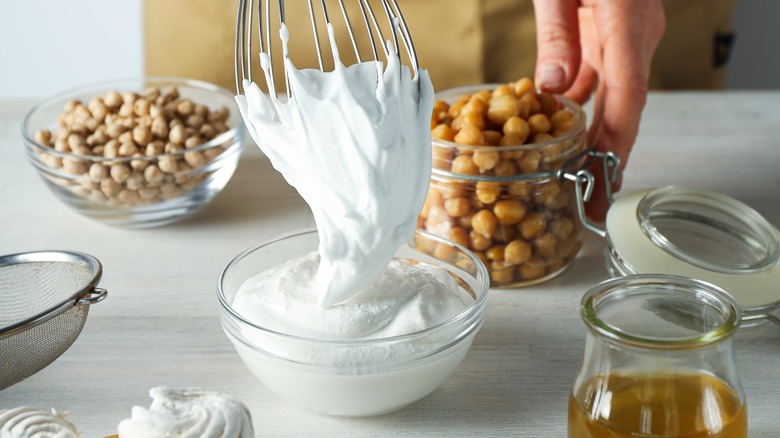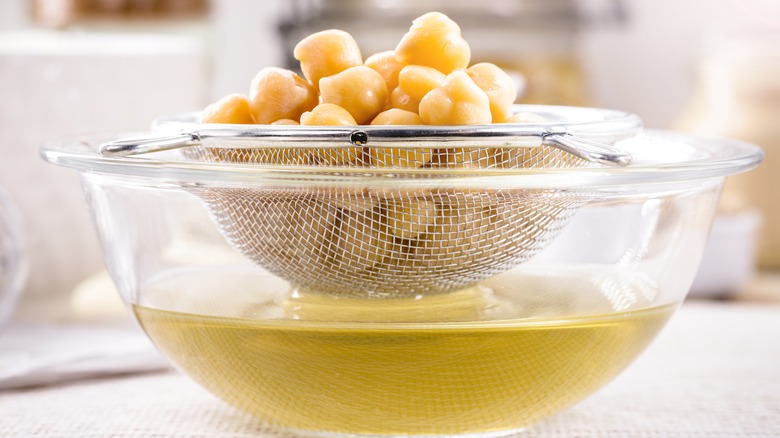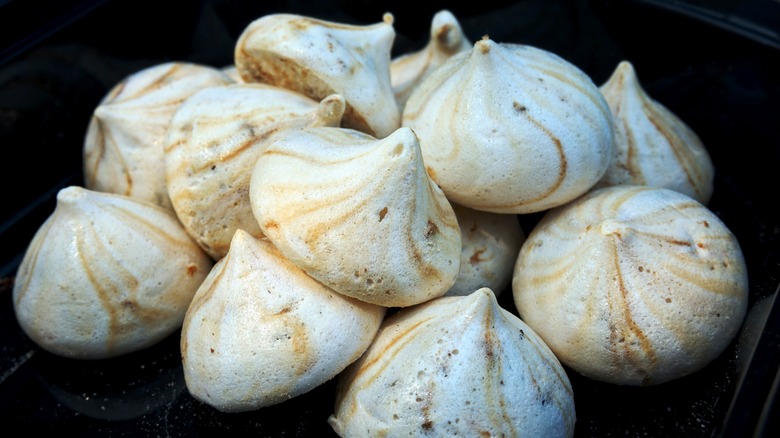The Ingredient To Look Out For When Making An Aquafaba Meringue
Meringues are treats that feature in many tasty recipes, including a classic pavlova, topping a lemon meringue pie, or served as cookies. Now, meringues are typically made using beaten egg whites. However, if you're egg-free or want to play around with vegan cooking, you can always use aquafaba — which typically refers to the liquid that chickpeas are cooked in — as a replacement.
Although it might seem strange, when you cook chickpeas, some of the proteins and sugars in the legumes leak out into the water. This creates a liquid that has a very similar makeup to egg whites. The result is that you can use it in much the same way, whipping it up into foamy meringues or using it as a binding agent.
If you're using it to make a meringue, however, for the best results, you won't just want to use any aquafaba. Instead, you'll want to choose one made from chickpeas that were cooked with kombu to ensure you get a stable foam when you whisk the liquid.
Why kombu helps stabilize aquafaba
Kombu is a type of edible seaweed that is sometimes cooked with chickpeas because it can help minimize the unwanted gas that can come with eating beans. Beyond that, it also has some components that help make aquafaba more stable when it's whipped up. One component in particular is something called carrageenan, which is a type of carbohydrate. Carrageenan is often added to other food products as a preservative, but it can also act as a thickener and emulsifier. As such, it stands to reason that when it's present in your aquafaba, it helps it to form stiffer peaks when you whip it.
Next time you're picking out a can of chickpeas, look at the ingredients list on the package for kombu. Or, you can prepare the legumes at home, throwing in a piece of kombu as you cook them. But this is just one ingredient that may help create better meringues next time you bake.
Other tips for helping stabilize your aquafaba
Besides finding chickpeas cooked in kombu, there are a couple of other things to note when making meringue from aquafaba. For one thing, to get some additional stability, you can add some cream of tartar to the liquid as you whip it. This ingredient is a stabilizer often used with egg whites, too, and can help boost the stiffness of the meringue while also cutting down the time it takes to whip the liquid into a foam. Plus, it helps prevent the meringue from deflating quite so fast. If you use this trick, you don't need to add much: Just ⅛ of a teaspoon for every 2 tablespoons of aquafaba should get you the results you're looking for.
Apart from the cream of tartar, the viscosity of the aquafaba matters. If you notice that it's too liquid, you can boil it down a little in a saucepan to reduce the amount of water and give it a thicker, stickier texture. Just remember to let it cool fully before attempting to whip it up into fluffy peaks. With these tips and tricks, you should have no problem making a tasty meringue using this plant-based ingredient!


